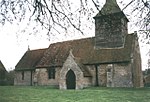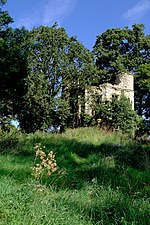Aston Mullins
Buckinghamshire geography stubsHamlets in Buckinghamshire

Aston Mullins is a hamlet in the parish of Dinton, in Buckinghamshire, England. At the 2011 Census the population of the hamlet was included in the civil parish of Dinton-with-Ford and Upton
Excerpt from the Wikipedia article Aston Mullins (License: CC BY-SA 3.0, Authors, Images).Aston Mullins
Chapel Road,
Geographical coordinates (GPS) Address Nearby Places Show on map
Geographical coordinates (GPS)
| Latitude | Longitude |
|---|---|
| N 51.768908 ° | E -0.886257 ° |
Address
Chapel Road
Chapel Road
HP17 8XG , Dinton-with-Ford and Upton
England, United Kingdom
Open on Google Maps









